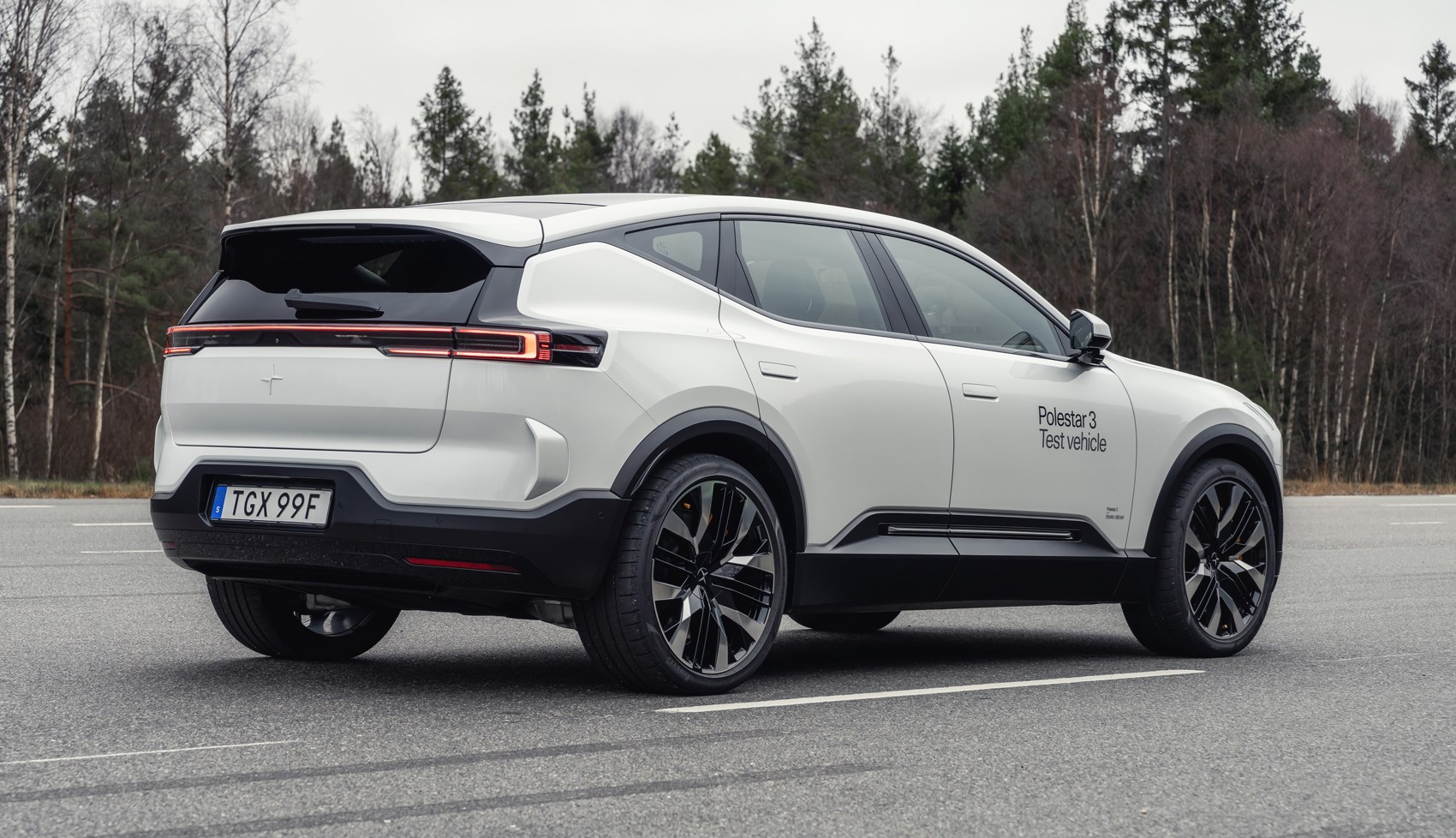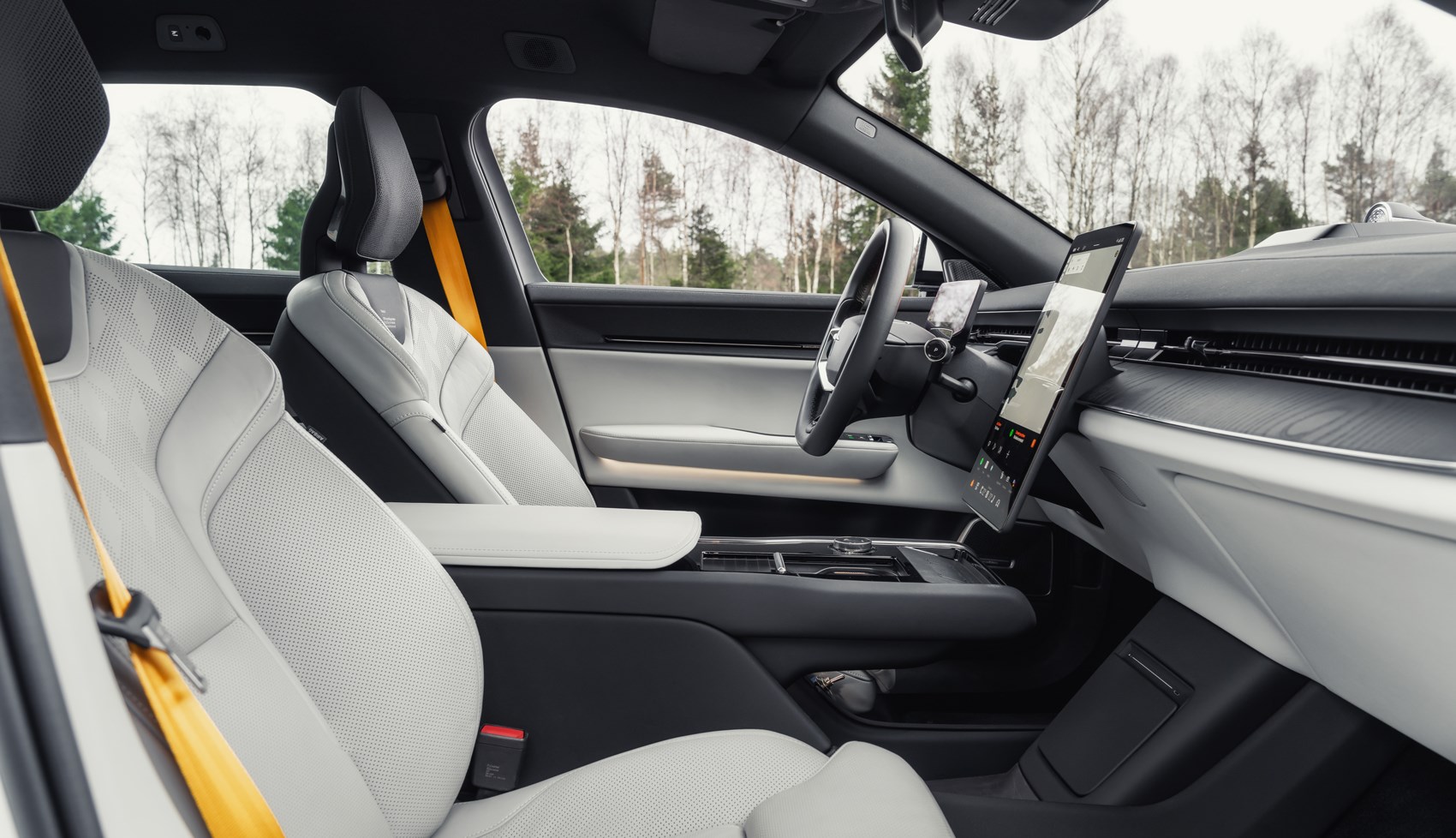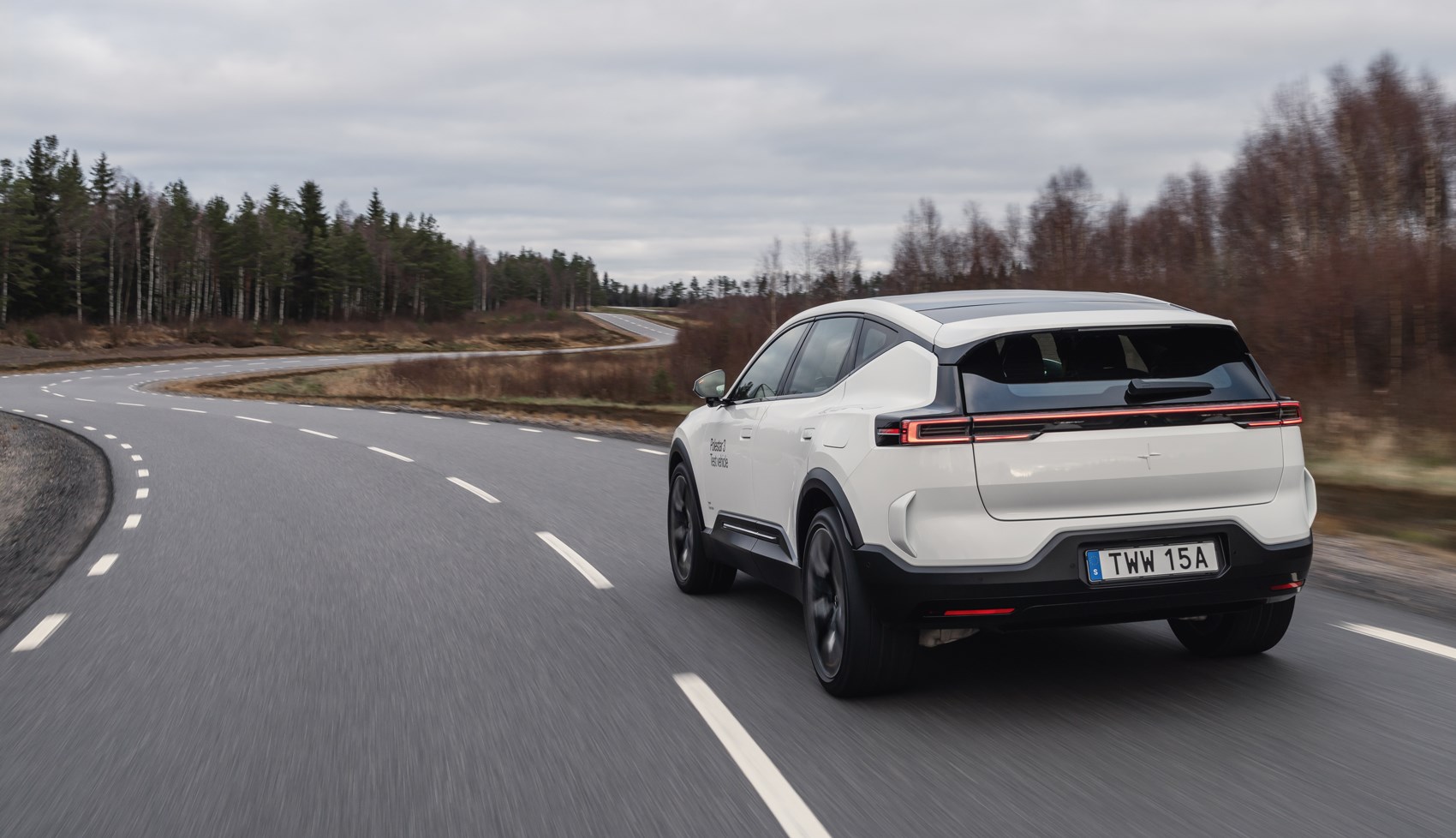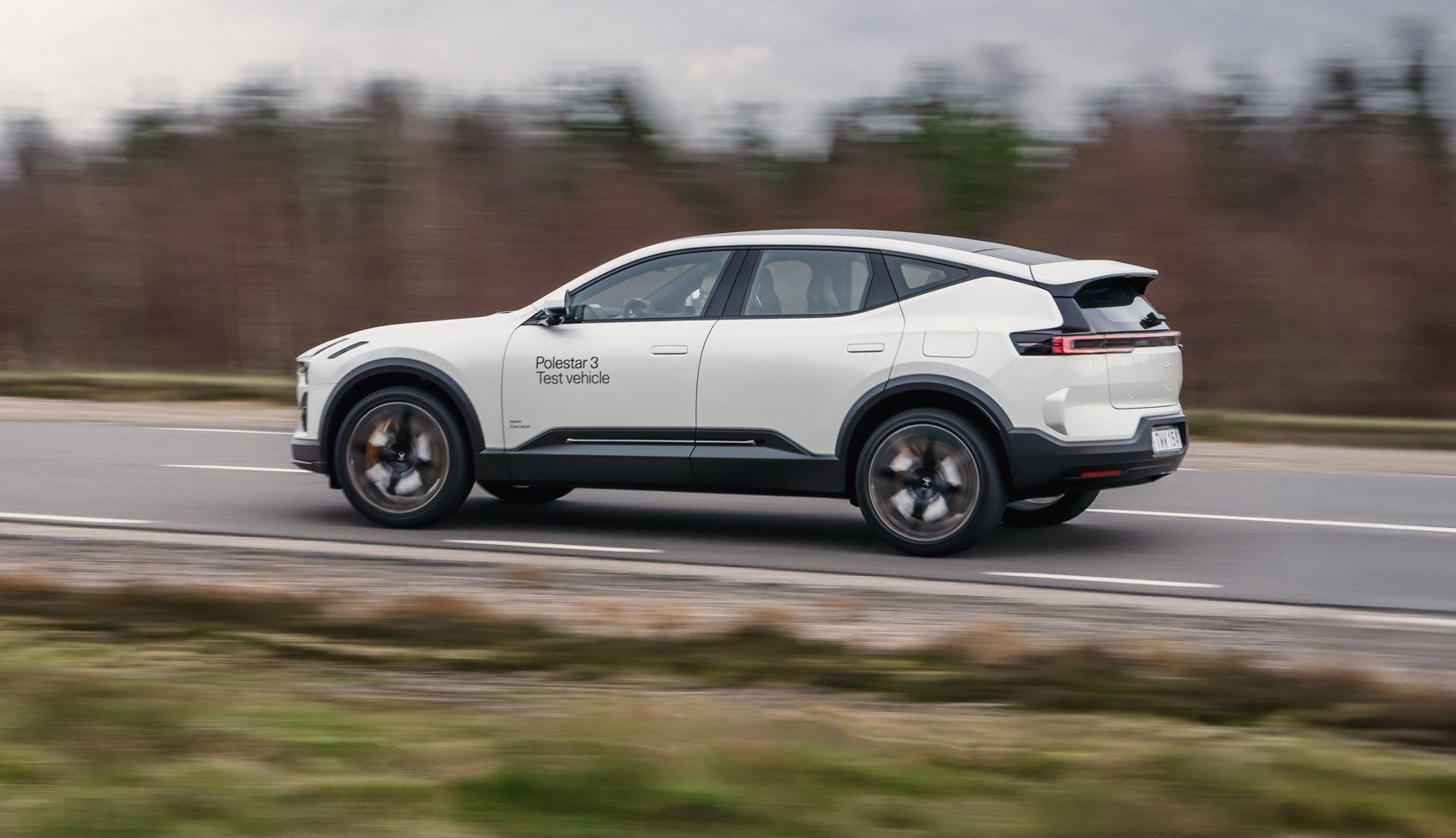► First impressions of new Polestar 3
► Claims up to 379 miles of range
► Launches in summer 2024, priced from £79,900
The Polestar 2 felt very much like a Volvo spin-off, its XC40-shared underpinnings obvious. But the Polestar 3 is a new direction, sitting on a spiffy new EV-only architecture and being smaller and sleeker than the three-row Volvo EX90 that will sit on the same platform.
The Polestar 3 will be reaching customers in the second half of next year, with UK pricing starting at £79,900 with the slightly more potent Performance version costing £85,500. That’s serious money in what is becoming an increasingly crowded part of the market, but our first impressions – harvested on Volvo’s Hällered test track near Gothenburg – are overwhelmingly positive.
The 2024 Polestar 3: battery and range
While other versions will follow, the Polestar 3 will be launched with the straight choice between the regular AWD version and the slightly quicker Performance pack. Both feature the innovation of a twin-clutch torque-biasing differential for the rear motor, and use the same XL 111kWh battery pack, with 107kWh usable. Polestar is targeting a WLTP range of 379 miles for the regular car and ‘up to 360’ for the Performance.

Although the CATL supplied lithium-ion battery pack has a 400-volt architecture, in contrast the 800-volt systems of sharp-end rivals, it will support DC fast charging at speeds of up to a claimed 250kW, giving the prospect of a 10 to 80 percent recharge in as little as 30 minutes in optimal conditions.
Which to choose?
Paying the £5600 extra for the Performance brings 22-inch alloys over the standard 21s, more aggressive dynamic software for various active systems and a modest performance upgrade – with system peaks of 517bhp and 671lb 0ft over the regular 498bhp and 620lb ft. Polestar claims the Performance can dispatch the 0-62mph benchmark in just 4.7-sec – 0.3-sec quicker than the regular car – although both versions are ultimately curtailed by the same 130mph limiter.
Beyond the bigger wheels – which will be optional on the regular car – the Performance is distinguished by nothing except a higher quoted kW output on its front door label and gold-coloured tyre inflation valve caps and seatbelts.
Cutting edge design

While the Polestar 2’s body is a melange of coupe, crossover and saloon, the Polestar 3 is an unashamed SUV, although one with a roofline that falls towards the rear of the car. It looks striking in the flesh, well proportioned and benefiting from the packaging advantages of the EV-only SPA2 platform which allows a sizeable 2985mm wheelbase within the 4900mm overall length.
Aerodynamics have played a big part in the design, the best example being the narrow wing element integrated into the leading edge of the bonnet to help clean up airflow (Polestar quotes an impressively sleek 0.29 coefficient of drag.) At the rear is a full-width lightbar and a rear wiper that looks nearly as dinky as the one on the Mini hatchback.
Swedish minimalism
Moving inside, the cabin is well finished and impressively spacious for human occupants, legroom in the back feeling particularly generous thanks to the lack of the need to accommodate a third row. Boot space is less good, with a wide but shallow compartment resulting in only 394-litres with the rear seats in place, although with another 90-litre hidden compartment under the boot floor. There is another 32-litre frunk at the other end, intended for charging cables.

A panoramic glass roof will come as standard, this featuring an etched Polestar logo, which gives a light airiness to the interior, and materials feel plush enough for the price tag. One odd detail is Polestar’s decision to label the seats with the material they are made from – recycled vinyl, wool and leather will all be offered – also the equivalent CO2 emissions from their production. An example of non-virtue signalling?

Physical switchgear has been pretty much culled; even the hazard light switch has been moved to the roof console. Beyond the basic driving controls, everything is managed by the vast 14.5-inch portrait orientated touchscreen running Google’s Android Automotive operating system. This wasn’t in final spec in the prototypes, with some functions unavailable, the crisply rendered display looked good, but there are still some obvious usability compromises in the minimalist approach – adjusting external mirrors being an awkward, multi-step process using the touchscreen.
How does it drive?
Plenty of high-end SUVs have already proved how effective smart dynamic systems can be at apparently bending the rules of physics. On paper, the Polestar 3 would appear to lack several of these: there is no active anti-roll system, or one of the increasingly popular rear-steering set-ups to sharpen responses.

But the Polestar 3’s combination of air suspension (standard at launch, although a steel-sprung variant isn’t ruled out), adaptive shock absorbers and the smart new rear differential worked together to deliver both comfort and handling precision. Ride stayed pliant over simulated rough surfaces, body control excellent when dealing with bumps or aggressive changes of direction. Despite driving in sub-zero conditions grip levels were high on summer-spec Pirelli P-Zero tyres, the steering was precise and high-speed cruising assured: at 90 mph only wind noise from the door mirrors interrupted the well-insulated calm of the cabin.
The Polestar 3’s smart rear differential, produced by BorgWarner, works discreetly. This uses twin electro-hydraulic clutch packs, one for each wheel, to allow full variation of torque output across the axle. The advantage over having a motor for each wheel is that the axle’s full output is still available even when the torque is being heavily biased to one side; dual motors would be limited to their individual peaks. The basic principle is similar to the active differentials fitted to cars like the Aston Martin Vantage and last-generation Ford Focus RS. The Polestar 3’s diff can also bias regenerative braking, and can declutch both wheels, turning the car front-driven to boost efficiency.

From the driver’s seat the cleverness going on at the back is pretty much invisible. The Polestar 3 doesn’t have the tail-happy sensation remembered fondly from the Focus RS, because it doesn’t overspeed the rear wheel aggressively. But the differential does fight understeer impressively well, keeping the Polestar on a chosen line well beyond the point it feels as if it should start nudging wide. It feels much more fleet of foot than something weighing 2670kg (on Polestar’s numbers) should.
Braking also impressed. There are two switchable levels of regen, the more aggressive a one-pedal mode, plus a coast function. These are backed up by serious 15.7-inch vented Brembo discs gripped by four-pot calipers up front, with only slightly smaller 15.3-inch rotors behind. The brake pedal offers good weighting and progressive, regardless of whether the car is slowing by friction or electron flow.
Polestar 3: prototype impressions
There are already plenty of high-end performance EV SUVs to choose between, but the Polestar 3 feels ready to be a tough challenger in its crowded segment, combining the brand’s emphasis on design with a more mature driving experience than the existing Polestar 2. Yet one of its toughest challengers may well be another member of the family. The Polestar 4, also set for launch next year, is another fully electric SUV sitting on Geely’s SEA platform, which will be only slightly smaller but significantly cheaper.